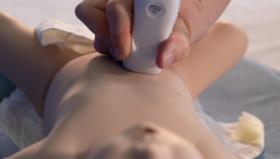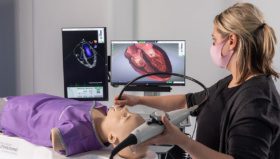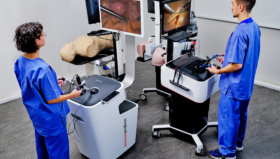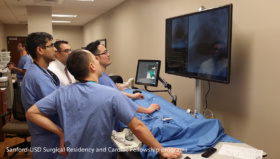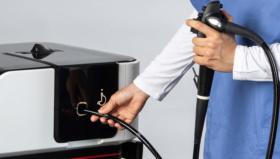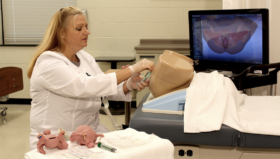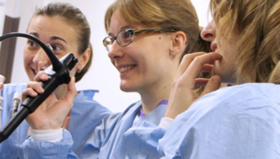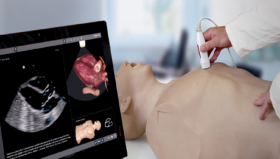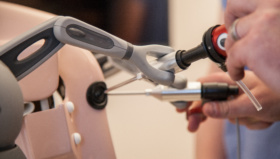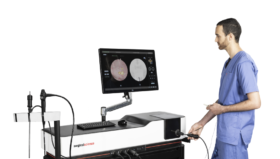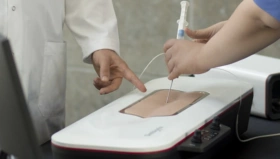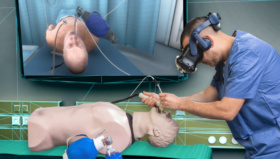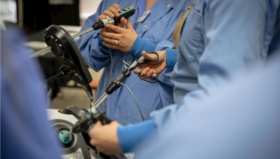The Importance of Hands-on Simulation Training for Cardiovascular Technologists
Cardiovascular technology (CVT) is a complex and demanding field. Becoming a successful cardiovascular technologist requires a range of skills and abilities. We have met with Shawna Defriece, Program Chair & Professor, Cardiovascular Technology at Valencia College to see how her students become proficient and how they use medical simulation training.
 Using Medical Simulations To Train Cardiovascular Technologists
Using Medical Simulations To Train Cardiovascular Technologists
According to Shawna Defriece, who has been using the ANGIO Mentor simulator for ten years, hands-on simulation training is one of the most effective ways for students to become proficient. Medical simulation is a method of training healthcare professionals through immersive hands-on experiences that mimic real-world scenarios. Simulation training has become an essential part of CVT training, allowing students to practice in a controlled environment and make mistakes without risking harm to patients.
Teamwork is a crucial skill for cardiovascular technologists, as procedures in invasive cardiology require a team of professionals to work together effectively. Using the simulator, students are assigned in teams of two (physician and assistant, which in the Cath/EP lab is identified as scrub) and practice procedural cases every week. During their final exam each semester, they must perform a full diagnostic or interventional simulation case as a team. This process helps students learn to communicate effectively with physicians and each other, anticipate each other’s needs, and work together to make decisions.
Developing Anticipation and Problem-Solving Skills
Anticipation is also essential for successful cardiovascular technologists. Students must be able to anticipate the physician’s next move and be three steps ahead of where the physician is going to be. This requires an understanding of procedural flow, an awareness of the risks and potential complications of the procedure, and the ability to jump in and handle any scenario that may arise.
Shawna explains how they use the imaging, the educational indicators and modality in ANGIO Mentor:
“Not only do the students take the views for angiography imaging to describe the lesions and anatomy, but they are required to tell us how they’re going to fix those lesions. Within the system, students have to be able to decide which tools they will use to prep or fix the lesions. They can choose the aspiration catheter if it’s a thrombus in an acute MI for example. We run ACS scenarios, which is acute coronary syndrome, to teach them how to handle STEMI patients and non-STEMI patients. We also have the balloon and stent options, so they can fix them with pre-dilation balloons, stenting, and post-dilation balloon, if necessary. We utilize both coronary and vascular modules for our scenarios.”

Receiving Constructive Feedback and Guidance
In addition to the above skills, students must be coachable and receptive to constructive criticism. Students who are not coachable or who cannot accept feedback will struggle to grow and develop in their careers. Using the simulator’s performance report and the faculty observation, instructors can provide objective feedback and guidance in a supportive and constructive manner, helping students to learn and grow from their mistakes. The teams are de-briefed weekly after each practice case and after their final exam simulation.
Simulation-based training used in CVT covers scenarios of diagnostic and interventional coronary catheterizations and interventional vascular procedures. It also covers complications that may arise during these procedures, such as dissection or perforation.
“I wish I had known how much it has to offer. This system has so much to offer and we’re heavy users of it for years, every single week. But there is still just simply not enough time to utilize all of the programs that it has to offer.” says Shawna Defriece.
Shortening the Learning Curve
The importance of simulation-based training used in CVT cannot be overstated. Simulation helps students to connect the dots between theory and practice, allowing students to apply their knowledge and skills in a realistic setting.
Furthermore, simulation shortens the learning curve for these skills. It enables students to learn at their own pace and repeat procedures until they feel confident enough to apply them in real-life scenarios. As a result, they make fewer errors, reduce procedure time, and improve patient outcomes.
To assess the effectiveness of hands-on simulation training, students undergo a final exam that assesses their performance. This assessment covers topics such as panning, equipment selection and use, pharmacology and vitals management, teamwork, timeliness, decision making skills, and professionalism.
Increasing Confidence and Competence
Incorporating medical simulations into CVT training has numerous benefits. It allows educators to prepare students for real-world scenarios and help them become competent and confident healthcare professionals. It also provides students with a safe and supportive environment to learn and grow, enabling them to make mistakes and learn from them without risking harm to patients.
By practicing procedural cases and working together as a team, students can develop the skills and abilities necessary to succeed in this challenging and important profession.
